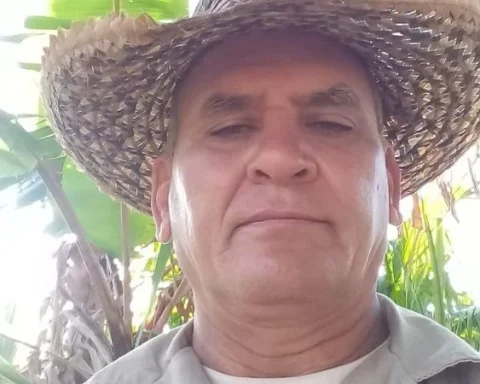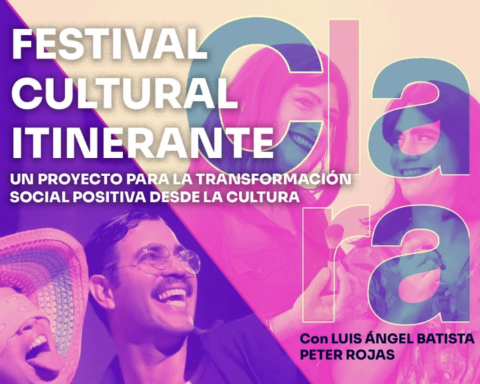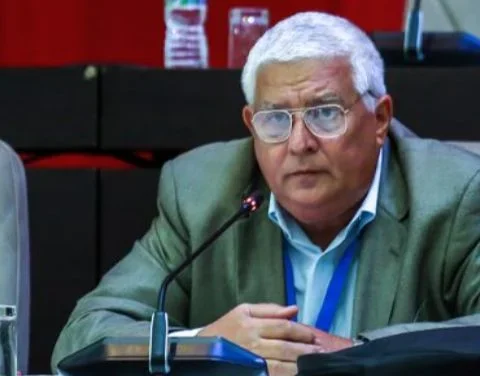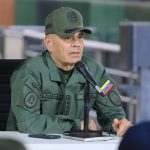Havana-. Six years ago Fidel Armenteros Valdés went to Saint Lazarus. Kneeling before a small statuette made of plastic, he asked her to intercede for the health of a nephew. The child, less than 72 hours after birth, was struggling between life and death in open heart surgery.
In payment to the favor, every December 17 He crawls, barefoot and half-naked, the 5-kilometer highway that separates Santiago de las Vegas from the El Rincón neighborhood, where “old Lázaro” has his sanctuary.
Although she does not carry crosses or any other heavy object, the yagas caused to her body by the friction with the stones and the asphalt, eloquently tell of the martyrdom she suffers every time she has to fulfill the promise she has made.
“I am very grateful, next year I will finish paying him. First he survived the operation, then the doctors didn’t give him three months to live. Thanks to this miracle that was granted to me, the child is still with us, ”said Armenteros, lying on the ground while he gathered his strength for the last assault on the temple.
Beyond faith, the annual pilgrimage on the 16th, 17th and 18th is a cultural tradition. San Lázaro is begged for health, but this year, many of the candles lit at the foot of the fences of his altar raise a plea for the relatives who are on their way to the United States.
For Nilda Fernández Roca, owner of one of the flower shops near the temple, faith in San Lázaro can improve the situation of her son who is stranded in Honduras, without money to continue the trip.
“I swore to him that if the proceeds from the sales are enough to pay for my son’s transit to Mexico, next year I will give away all the purple flowers, which are the ones used for his offerings. Also that he take great care of me, I ask the same of old Lázaro as of Babalú Ayé”, said the woman.
Downward pilgrimage and harassed self-employed
According to the temple’s secretariat, the figures for the pilgrimage cannot be established until the last week of the month, due to the incessant flow of pilgrims. However, it is estimated that the 16th and 17th had less attendance than last year.
“In 2021 we received more than 100,000 parishioners. We expected something similar and it has been less. On the 16th more than 20 thousand people came, but the days before it was much less. Nor was the 17th the best date,” said Andrés Arencibia Cárdenas, an employee of the temple, who is confident that more Cubans will still attend.
The decrease in the traffic of pilgrims is also noted by the dozens of self-employed people who, on both sides of the highway between Santiago de las Vegas and the sanctuary, sell flowers, candles, religious figures, drinks, cigarettes and food.
Gaspar Noroña Castillo, an assistant at a small flower stand, argues that on the night of the 17th they still had not sold the bouquets they had prepared the previous morning.
“You have to be careful because the flowers wither and you lose money, very little is being sold. Last year it was a parade, but this year the thing is dead,” said Noroña, who also denounces that the inspectors, based on fines, want to force vendors to lower prices.
However, the amounts established by the peasants are the ones that regulate the value of the flower bouquets on the pallets, according to Ada Savón Peña. From his stall, he explains, “we have to buy the bouquet of gladioli for a thousand pesos, the colored sunflowers, butterflies and other flowers that are used, none of them falls below 500 and to that we must add that we always have losses due to which they spoil during the transfer or wither”, highlighted Savón.
The woman expanded that the fines have no legal basis. The sellers have an operating license and their type of activity does not establish a price limit.
Ángel Luis Gómez Ruíz, self-employed in the area, highlighted that several colleagues have received fines between 5 and 8 thousand pesos, for selling bouquets to more than 500.
To avoid this, some sellers have chosen to delete the prices from the board, in case they are discovered and receive a greater fine.
“Nowhere does it say the prices we have to put, that is a cannon of these people who are always inventing without knowing the sacrifice one has to make to earn three pesos,” Gómez said.
The story of the African orisha
In the origin of the faith to San Lázaro two stories are intertwined. One of them is born from the parable of the rich man and Lazarus, while the other refers to Lazarus of Bethany, the brother of Martha and Mary who was the subject of one of the great miracles of Jesus Christ.
The popular belief of Cubans is identified, fundamentally, with the image of the beggar, the leper on crutches accompanied by two dogs. He is the one they call “the miraculous old man”. However, on the Island a third religious aspect bequeathed by African slaves converges, which syncretizes Babalú Ayé, from the Yoruba Pantheon, with the Catholic saint.
In the Lucumí language, his name means “Father, Lord of the Earth.” It is the orisha of leprosy, smallpox, venereal diseases, plague and misery in general. According to legend, Babalú Ayé was a very womanizing man like his brother Shango. Orula -the fortune teller- warned him that he should be careful because he could contract serious diseases. On a certain occasion he conquered a beautiful woman with whom he lay with and, when he woke up the next morning, her body was covered with ulcers.
The elders of the town, seeing his condition, sewed up his tongue and expelled him from the place. Shangó took him to Orula, who, after reprimanding him for disobeying, advised him to look for Osain to prepare a herbal remedy that would cure the disease. Babalú Ayé had to clean himself with them, bury the ebbó (cleaning and purification work) and look for a town where they would proclaim him king. Ogún gave him two dogs that would accompany him on the trip.
This time Babalú Ayé complied with Orula’s guidelines. He went out to find the site described by him and when he buried the ebbó it began to rain, the yagas disappearing.
Upon entering the promised town, he discovered that everyone suffered from a serious illness. Upon seeing him, the villagers went to meet him and venerated him because, according to them, the cure for his ills would come with the man who arrived in the rain. Babalú Ayé, who knew some of Osain’s healing secrets, cared for the sick and was proclaimed king.

Receive information from CubaNet on your cell phone through WhatsApp. Send us a message with the word “CUBA” on the phone +525545038831, You can also subscribe to our electronic newsletter by giving click here.















